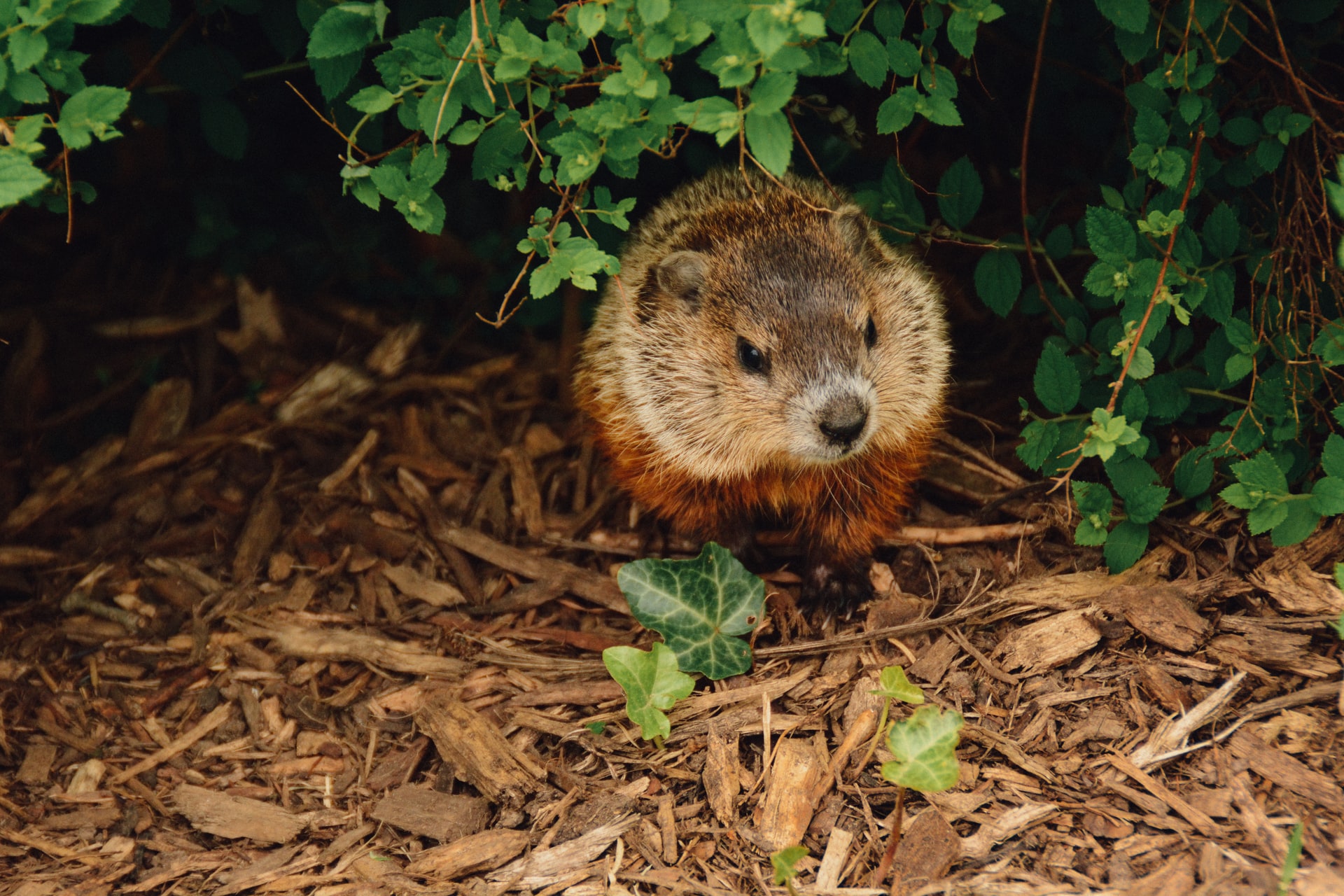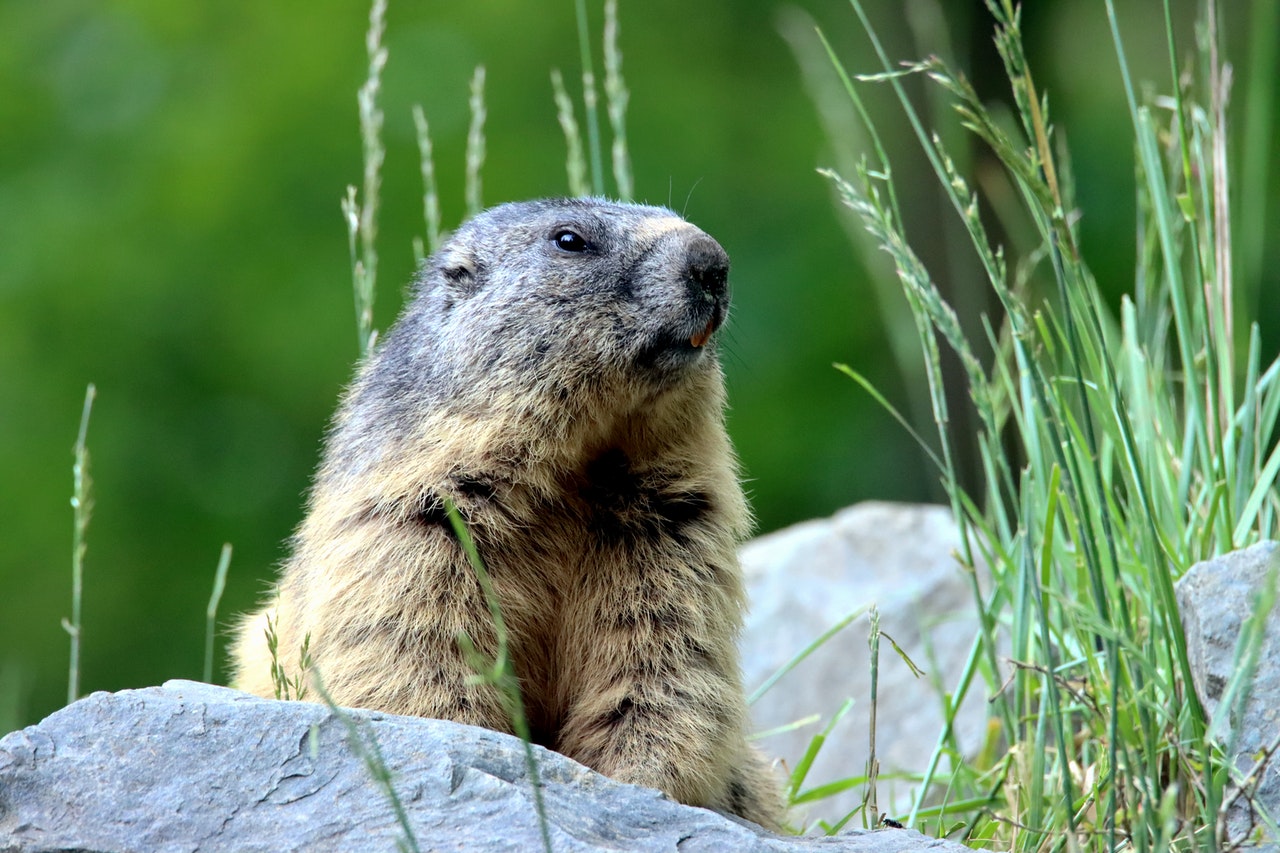Although we may be compensated or receive an affiliate commission if you buy something through our links, every editorial product is chosen independently. As of the time of publication, the ratings and pricing are correct, and the items are in stock.
First and foremost: Groundhogs are terrible weather forecasters.
According to legend, What Do Groundhogs Eat sees its shadow on February 2, winter will continue for another six weeks. While Punxsutawney Phil’s handlers claim that his seasonal forecasts are 100 percent accurate, the data tell a different picture. Since 1887, Phil has had a 39 percent forecasting success record, according to Stormfax. This is only 2% greater than the average groundhog success rate of 37%, according to Canadian groundhog research (the most accurate hog-nosticators in the study resided in Yellowknife, Canada, and had a 50 percent accuracy rate). To put it another way, a gambler would be better off flipping a coin.
Groundhogs have a unique hidden talent.
What do sleazy construction workers and groundhogs have in common? Both of them whistle at possible partners. Groundhogs are also known as “whistle-pigs” (and lecherous day laborers as “pigs”) because of this strange adaption. The most memorable Groundhog Day catastrophes are listed here.
They also go by other names.
Groundhogs belong to the marmot family of giant ground squirrels, but they’re also known as land beavers and woodchucks. According to Scientific American, the latter term has nothing to do with wood. It’s thought to be derived from the Algonquian word “wuchak” for the same animal. Check out some additional animal “facts” that you’re probably completely wrong about.
 Groundhogs are omnivores.
Groundhogs are omnivores.
Grass, herbs, and plants such as dandelions, daisies, and goldenrods make up the majority of the Groundhog Diet. They also have a keen eye for human crops such as carrots and corn, putting them on farmers’ hit lists. And, yes, they do consume tree bark on occasion, just as we all hoped woodchucks would. Find out about other notable groundhogs besides Punxsutawney Phil.
They live in North America.
Groundhogs are mostly found in the eastern and central United States, although they can also be found in Canada and Alaska. They prefer to live near an open field, near the edge of a forest or woodland, where they will most likely dig their underground tunnels. They may also be seen climbing trees.
They are excellent architects.
Groundhogs construct very magnificent dwellings. There are numerous “rooms” in their underground burrows, each having a particular purpose, such as a sleeping chamber, a nursery chamber, and a waste chamber (what we would call a bathroom). The length of the burrow varies between eight and 66 feet. Check out these fascinating animals with abilities in real life.
Their favorite pastime is sleeping.
Groundhogs are among the few animals that are as dedicated to hibernation as they are. They are known as “real hibernators” since they sleep from late fall through late winter or early spring, which can last up to six months depending on the temperature. Their body temperatures can dip to 20 degrees Celsius (68 degrees Fahrenheit) during this time, and their heart rates plummet from 80 to five beats per minute. Here are some of the reasons why Bill Murray despised the film Groundhog Day.
They’re unexpectedly romantic.
Male groundhogs are known to wake up early (after about three months) to begin looking for suitable mates, despite their rigorous hibernation tendencies. “In most cases, a male has a territory that includes a number of female burrows. And there’s some competition for that land,” said Stam Zervanos, a retired biology professor at Pennsylvania State University. “They strive to defend that region, going from burrow to burrow to see if that female is still around.” Groundhogs begin visiting females in February and then go back to sleep until March, when mating season begins. Putting your connections ahead of your sleep? That’s what we refer to as commitment. Take a look at these creatures who only have one mate for the rest of their lives.
Groundhog Day wasn’t always known as such.
If you can’t find a groundhog to admire on February 2, simply go outside and repeat the following old English rhyme:
Come, Winter, take another trip if Candlemas delivers clouds and rain; if Candlemas brings clouds and rain, go, Winter, and don’t come back.
Groundhog Day arose from Europe’s Candlemas Day, a religious (Candelmas commemorates Jesus’ first visit to the Temple in Jerusalem) and literal (the days are growing longer) celebration of light. The weather on Candlemas will be the exact reverse of the weather six weeks later, according to an old knight’s tale—yet, centuries later, a few lines of scientifically doubtful verse form the basis of an annual holiday. Take a look at some additional amusing festivals that everyone should observe.
Groundhogs haven’t always been the holiday’s most revered creature.
Candlemas has historically been a day of seasonal conjecture, falling roughly halfway between the winter and spring solstices, though the designated animal weatherman differs by country. According to records from the Penn State University Libraries, medieval cults revered bears, throwing celebrations near their dens while dressed up in grizzly costumes and waiting for a bear to emerge from hibernation to assess the weather. With sacred badgers, English and German Catholics observed a similar ritual. When badgers became scarce for German settlers in Pennsylvania in the early 1800s, colonists transferred an old-country practice to a plentiful New World animal: the groundhog. Learn about the reliability of Punxsutawney Phil’s predictions.
The groundhog isn’t allowed to be eaten anymore…
The Punxsutawney Spirit newspaper announced the first formal Groundhog Day celebration on February 2, 1886, which was held by a group of community elders known as the Groundhog Club. Marmots were more than cuddly meteorologists to this club; they were a delicacy. The group also conducted a summer groundhog hunt and picnic in addition to its Groundhog Day ritual. Cooked groundhog meat (described by locals as “a hybrid between pork and chicken”) and “groundhog punch,” a concoction of vodka, milk, eggs, orange juice, and “other ingredients,” is on the menu. Marmot meat was once the delicacy of the region. That began to change in 1887, when Punxsutawney Phil, a groundhog, was born. According to his caretakers, he has eluded the dinner plate for almost a century and counting.
Punxsutawney Phil is said to be immortal.
In the wild, a groundhog will live for six to eight years. Punxsutawney Phil, the official groundhog of America’s largest Groundhog Day celebration (and co-star in the smash film Groundhog Day), has been around since, um, 1887. So says his website. To what does Phil attribute his illustrious 134-year career? A miraculous elixir known as “groundhog punch” once again—presumably not the same recipe of vodka and eggs that its creators drank. Phil is fed a single drink of groundhog punch every summer, according to the lore-keepers of the modern Punxsutawney Groundhog Club, and is instantaneously granted another seven years of life. (To put it another way, it’s the polar opposite of vodka.) Here are a few immortal animals that can live indefinitely.
 What does an “immortal” marmot get up to in his spare time? Read and drink
What does an “immortal” marmot get up to in his spare time? Read and drink
Phil has seen a lot in the last century, and he isn’t as protected as you might assume from someone who lives with his head in the earth. During Prohibition, Phil, for example, threatened to inflict an additional 60 weeks of winter if he wasn’t permitted to drink. Phil has become noticeably calmer in recent days. We may probably credit his wife, Phyllis, for that. Phil and Phyllis share a tranquil existence in the Punxsutawney Memorial Library, where they spend the 364 days they aren’t looking for their shadows.
Groundhog Day sparked a surge in tourists at Gobbler’s Knob.
While Punxsutawney Phil’s house, Gobbler’s Knob, has received a fair amount of travel since the custom began, actor Bill Murray and his holiday-themed film truly put it on the map. On February 2, 1993, Gobbler’s Knob began witnessing crowds of up to 35,000 people following the release of Groundhog Day, featuring Bill and Phil (for comparison, the population of Punxsutawney at the time was less than 7,000). Phil was invited to be a guest on The Oprah Winfrey Show two years later. Don’t miss out on these other well-known animals who shaped history.
Bill Murray and Andie MacDowell were on Phil’s side in court—or would have been if the situation had arisen.
An Ohio lawyer demanded that Punxsutawney Phil pay for a fake weather prediction with his life in a 2013 news story that was barely distinguishable from the type of parody that appears in The Onion. Punxsutawney Phil did purposefully, and with prior calculation and planning, cause the people to believe that spring will come early on or about February 2, 2013, at Gobbler’s Knob,” Ohio prosecutor Michael Gmoser stated in a cheeky open letter. “Contrary to the Groundhog Day report, a snowstorm and record-low temperatures have occurred and are expected to continue in the near future, constituting the offense of early spring misrepresentation, an Unclassified Felony, and against the peace and dignity of the state of Ohio.”
What is the penalty for this crime? “The death penalty,” says the speaker.
Surprisingly, the issue continued when a Pennsylvania legal firm publicly responded to Gmoser, claiming that the Ohio prosecutor lacked jurisdiction in Punxsutawney. Furthermore, Phil had a slew of character witnesses on his side, thanks to his role in Groundhog Day, which allowed him to build “lifelong and devoted friendships with the lesser supporting cast, including Bill Murray, Andie MacDowell, and Chris Elliot,” according to the firm. “It’s claimed that Punxsutawney Phil has already spoken with Mr. Murray, Ms. MacDowell, and Mr. Elliot, all of whom have purportedly promised to ‘have his back’ if legal action is required.” (It wasn’t the case.)
Robo-groundhogs could be the way of the future.
Although we’ve come a long way from eating groundhogs, their safety remains a concern. New York City Mayor Bill de Blasio dropped Staten Island groundhog Charlotte on Groundhog Day 2014, causing internal injuries that killed her a week later. Wiarton Willie, a well-known Canadian groundhog, died the Sunday before Groundhog Day in 1999, but the news was kept secret until February 3. Stories like these, combined with the growing crowds at Gobbler’s Knob, prompted PETA to propose an alternative: Punxsutawney Phil should be replaced by a robot groundhog.
While you’re worried about a cyber-marmot insurrection, consider Washington, D.C.’s less expensive option: Potomac Phil, the city’s official groundhog since 2014, is a taxidermied thrift store find. Strange? Sure. But it turns out that D.C. isn’t the only place in the country with unusual wildlife—find out what the strangest animal in each state is.


